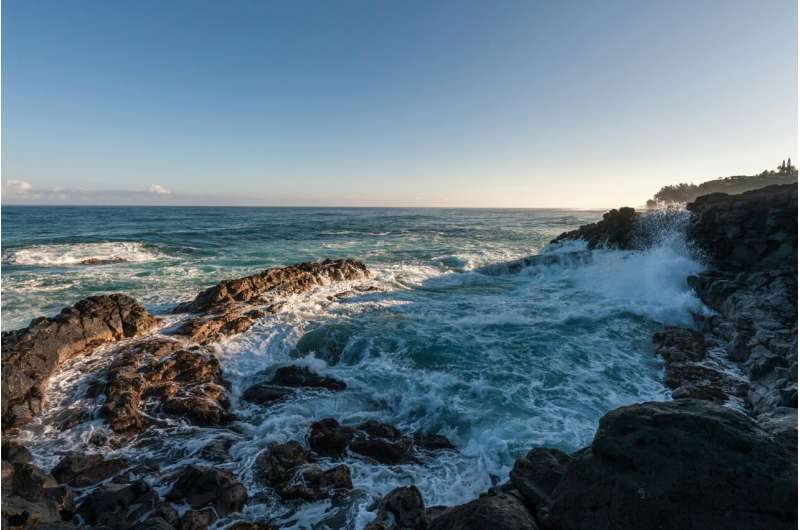

The oceans are warming at an alarming rate. 2023 shattered records across the world’s oceans, and was the first time that ocean temperatures exceeded 1°C over pre-industrial levels. This led to the emergence of a series of marine heat wave events across both hemispheres, from the waters around Japan, around South America, and across the wider North Atlantic.
Marine heat waves are periods of extremely warm sea temperatures that can form in quite localized hot spots but also span large parts of ocean basins. By definition, they have to last five days to be classed as a marine heat wave, but some major events have lasted months—even years, in an extreme case.
Notable events have led to catastrophic impacts on marine ecosystems, the economy and coastal communities. For example, coral bleaching in the tropics has caused huge losses to the tourism industry, mass mortalities or major shifts in fisheries have impacted fishing industries worldwide, and vast losses of sea grass meadows and kelp forests have decimated countries’ natural capital.
Closing a crucial gap in our understanding
The UK has largely escaped any major marine heat waves that could have caused notable impacts to marine ecosystems and the blue economy. However, in June 2023, a short-lived but intense event materialized around the shores of the UK and Ireland, which was widely documented in the media.
The impacts of this heat wave remain unknown, highlighting a crucial gap in our understanding of past marine heat waves’ characteristics around the UK and what their potential future impacts may be.
In an article in Frontiers in Marine Science, researchers characterize both marine heat waves and their opposites—marine cold spells—around the UK for the first time.
UK waters do not appear as a major hot spot across the wider North Atlantic, with the Gulf Stream and central subpolar gyre experiencing the greatest heat wave and cold spell activity respectively. However, when zooming in on UK waters, regional variability becomes apparent, particularly for marine heat waves.
On average, the southern North Sea and English Channel tend to experience longer (around a month) and moderately intense (maximum temperatures reaching 1.5°C higher than expected) heat waves, whereas the eastern North Sea has a tendency to experience shorter (two to three weeks) but more intense (maximum temperatures >3°C) heat waves.
Considerable variability exists
Marine heat waves are documented all around the UK, lasting up to five months and occurring throughout the year, even in winter. When investigating individual events, it is evident that considerable variability exists in terms of location, intensity, duration and time of year. This high variability may also explain the inconsistent response in chlorophyll-a, a proxy for phytoplankton abundance.
Our research reveals that chlorophyll-a extremes do not coincide with temperature extremes in UK waters, although there is some indication that highly productive events, for which we have coined the term ‘greenwaves,’ occur more frequently in the southern North Sea and closer to the coast.
For the wider North Atlantic, marine heat waves are more likely to co-occur with ‘bluewaves’ (low chlorophyll-a extremes) in the tropics and subtropics, while cold spells are more likely to co-occur with greenwaves at higher latitudes.
The direct relationship between these types of extremes is inconsistent and needs more investigation around the UK. This may be due to the UK residing between mid- to high latitudes. Seasonality may also play a vital role.
Seasonal differences
The timing of events will also greatly affect the impact on the wider marine ecosystem. For example, if a marine heat wave occurs at the height of summer, the thermal limits of species like seagrass or seaweed may be breached, which could lead to extensive damage or even mortality, which has been documented in other places worldwide.
But if an event were to occur in winter or spring, the unseasonably warm temperatures may initiate phytoplankton blooms, possibly leading to either a temporary boost in productivity, greatly benefiting fisheries, or causing harmful algal blooms, leading to negative impacts.
Our research also shows that when marine heat waves occur in the relatively shallow southern North Sea and English Channel, near-bottom oxygen concentrations tend to be extremely low, which puts benthic ecosystems under increased stress.
For other locations around the UK, this relationship is apparent during the first half of the year, where the water column is well-mixed and the impact of extreme surface temperatures is able to reach the seafloor. During summer, the water column is not as well mixed, keeping the impacts of the marine heat wave confined to the surface.
Unique opportunity
Given the complexity of this region, it is vital that more targeted research is undertaken to understand the future impacts of marine heat waves on marine ecosystems, the blue economy and society. If high-risk regions can be identified, the resilience of species and coastal communities can be assessed and properly managed.
The June 2023 marine heat wave should be perceived as an alarm bell. While these events do not appear to be as long-lasting or intense as other heat waves around the world at the moment, they are projected to increase.
This means that the UK is presented with a unique opportunity to take advantage of our head start and learn from other nations to increase preparedness and response capability for future extreme events.
More information:
Marine heatwaves and cold spells in the Northeast Atlantic: what should the UK be prepared for?, Frontiers in Marine Science (2024). DOI: 10.3389/fmars.2024.1434365
Citation:
How future heat waves at sea could devastate UK marine ecosystems and fisheries (2024, October 4)
retrieved 4 October 2024
from https://phys.org/news/2024-10-future-sea-devastate-uk-marine.html
This document is subject to copyright. Apart from any fair dealing for the purpose of private study or research, no
part may be reproduced without the written permission. The content is provided for information purposes only.